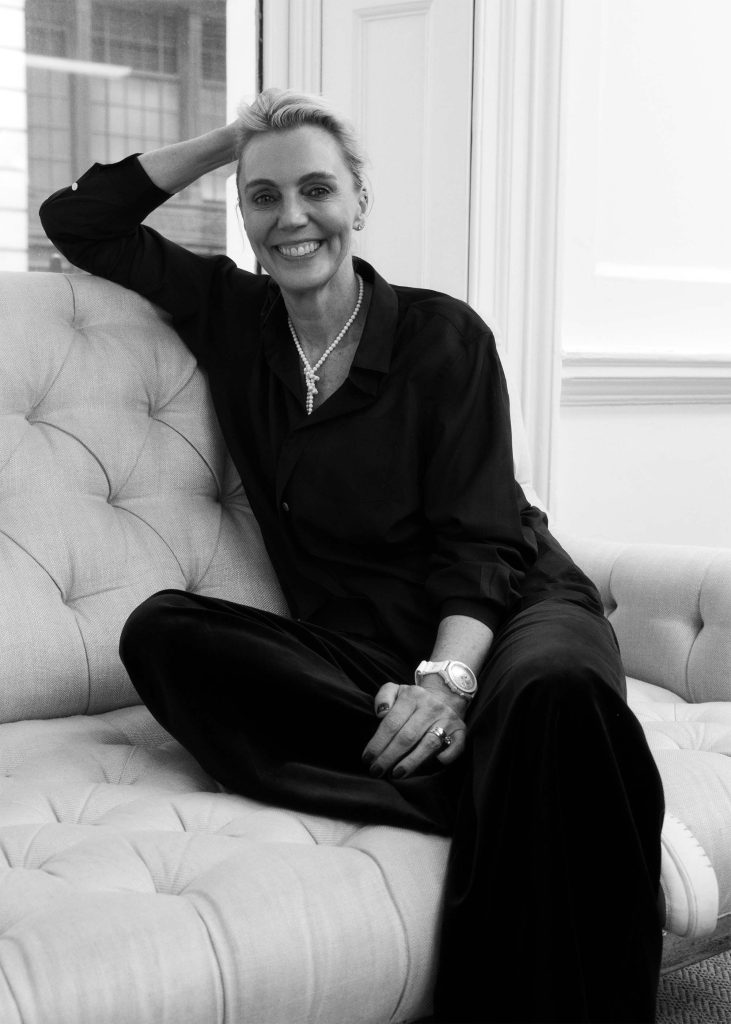With new social media platform Weare8, founder and chief executive sue fennessy wants to redirect billions in global advertising spend to people and planet—and create a user experience that emphasises community and creativity in the process.
BY BRODIE LANCASTER
The promise of social media was always community. From the early days of platforms like MySpace and Friendster, the goal and the purpose was to bring us together. Influence, inspiration and commerce came later.
Over the past decade, as people became users (and then creators or influencers), the “us” became blurrier and the original raison d’etre slowly ebbed away. Growth—of both users and profit—became the goal, and algorithms increasingly dictated what and who we experienced online.
As a result, that promise of unity and connection has come to feel more like a tease – or even a bald-faced lie perpetuated for profit. WeAre8, a mobile-first social media platform launched in Australia last September, is on a mission to change all that, promising to bring us closer to the people and causes we actually care about. And they will pay us for the privilege.
“How do we reimagine social in a way that’s free from algorithms, free from hate, full of love, full of community?”
This is the question WeAre8 founder Sue Fennessy and her team asked while plotting their new approach to social networking.
She says WeAre8— which claims “The People’s Platform” as a subtitle—has arrived at a purposeful and progressive alternative model. The B Corp-certified company aims to divert $120bn in advertising profits away from tech giants and towards users, environmental causes and professional creators; this being the total dollar amount that brands are estimated to have spent on Facebook advertising in 2021.
They will do this by harnessing “the infinite power we have as a community,” Fennessy suggests. The “8” in the platform’s name both evokes the infinity symbol and references the eight areas of impact in which the diverted funds are spent: climate change, food, health, education, equality, water, peace, and animal welfare. “Social media is the medium of our time, right? But it hasn’t evolved to a place that serves the people,” Fennessy says.
“I became really obsessed with reinventing the ad model to get that money back into the hands of people. After doing that, how do we then reimagine social in a way that has zero tolerance for hate and no anonymity? They’re the two threads we’ve spent the past seven years and $35m building.”

Born and raised in Melbourne, Fennessy moved to New York in 2009 and founded data aggregator Standard Media Index (SMI). By then, she had spent 20 years leading global sponsorship agency MM Communications and digital entertainment company Frontiers Group.
Technology has been driving her work and thinking for decades, and it was in her role as chief executive of SMI that she got a front-row seat to the relationship between technology corporations and advertisers.
In her time there, she watched as the portion of the US$500bn annual global advertising spend that once bolstered local news, radio and television—constructs she believes “hold communities together”—shrank dramatically. Meanwhile, funds ploughed into Facebook, which in her view “didn’t share anything with people”, grew exponentially.
“I was in the US when the Federal Reserve came out with a statistic that 40 per cent of all Americans cannot find $400 in an emergency,” she recounts from her office in London, where she now lives and works.
That was a catalysing moment. “I realised… each of us, in the US and Australia, is worth about $400 a year to Facebook alone. We’re in this shocking economic crisis, yet we’re being stripped of value.” Fennessy says social media users have quietly become an enormous unpaid workforce; they are generating the content that captures the audience attention which earns these platforms their advertising dollars.
“When you see that injustice, you can’t unsee it,” she notes.
When advertisers buy placements on WeAre8, four per cent of their budget automatically goes to a charitable cause (they can choose from one curated by WeAre8 or select one of their own to support). A further one per cent goes to climate projects and five per cent toward carbon offsets.
The system also supports original content ideas, funnelling another five per cent of that advertising spend to a creator fund to reward artistic expression. This unseats the norm on other platforms where influencers receive money from brands or agencies to promote a product in ads thinly veiled as creative content.
As for general users—or “citizens” as they are called at WeAre8—those who watch two minutes of ads per day are also paid for their attention. It’s an appealing proposition both for users and for brands that value a captive audience. These micropayments, which users can choose to keep or pass along to charities, are derived from another 50 per cent of every ad buy. In a different kind of reminder that attention is a valuable resource, WeAre8 also sends citizens an alert to get off the app after using it for eight minutes.
Despite its promise, it might take time for people to buy what WeAre8 is selling. We are so accustomed to donating our time, content, data, behaviour and activity to platforms that getting something in return invites scepticism. “We have come to understand that as the norm,” Fennessy says. “The thought of getting something in return for the same behaviour is hard to compute, I think, when you first hear it.”
Read the full story in the fifth print edition of The Luxury Report, released March 2023.
